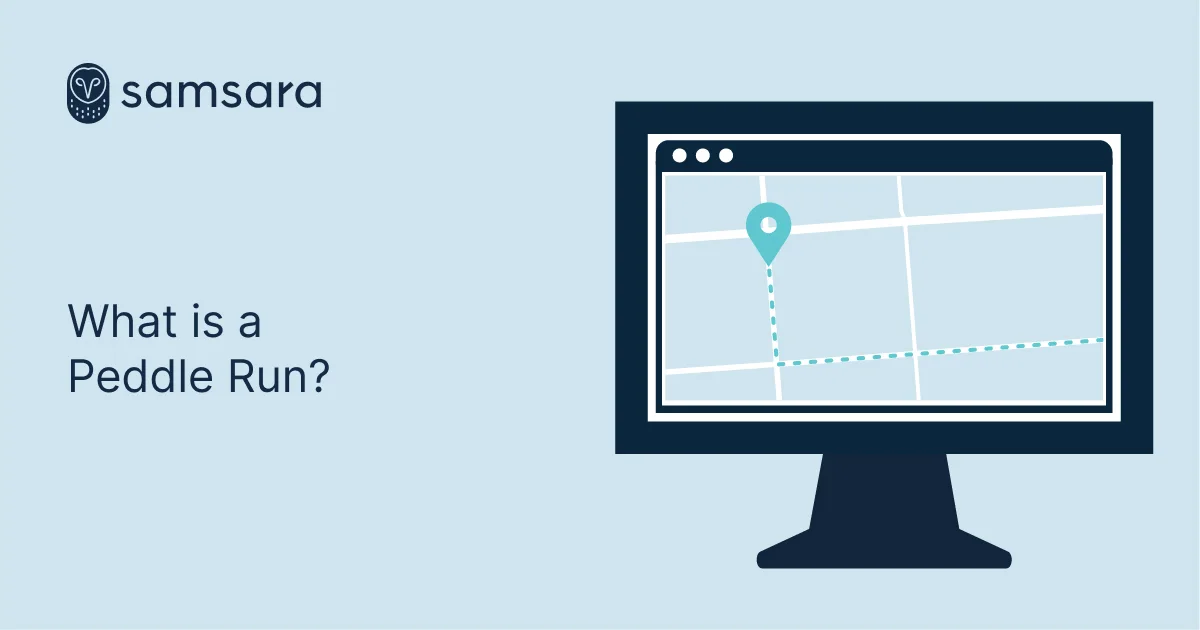What is a Peddle Run?
October 22, 2021

Get Started with Samsara
Check our pricesKey Takeaways
If you work in less than truckload (LTL) shipping, you may have encountered a peddle run, or a route with frequent pickups and stops. Drivers on peddle runs often drive between various terminals to collect and deliver freight for inbound and outbound moves.
What is a peddle run?
A peddle run is a truck route with frequent pickup and delivery stops. These jobs are often taken on by less-than-truckload (LTL) carriers and package delivery drivers.
How do peddle runs work?
Peddle runs are often found in the LTL system, which uses a “hub and spoke” distribution model. Local terminals like warehouses are the spokes, and larger centralized distribution centers are the hubs. The most common type of terminal found in this system is the pickup and delivery (PUD) terminal. These terminals are also called satellite or end-of-the-line (EOL) terminals.
The PUD terminal is a point of contact between shippers and receivers (or consignees). Drivers working at this terminal provide freight transportation services, including pickups and deliveries. When an LTL carrier goes out on a peddle run, they may be collecting freight for outbound shipments or delivering freight from inbound moves.
Peddle runs are often measured in peddle time and stem time.
Peddle time: This is a revenue-generating time when drivers are actively picking up and delivering freight. Carriers will want to maximize this time.
Stem time: The time from when the driver leaves the terminal until the driver makes the first pickup or delivery. It’s also the elapsed time when the driver makes the last pickup or delivery until returning to the terminal. Because this is a time when carriers are not generating revenue, they would want to locate PUD terminals quickly to minimize traveling.
PUD terminals vs. break-bulk terminals vs. relay terminals
Peddle runs sometimes work with other terminals besides PUD terminals: break-bulk and relay terminals. Each has different functions from the PUD terminal with some overlap.
Break-bulk terminals: This facility performs both consolidation and dispersion (or break-bulk) services. It’s used as an intermediate sorting point for freight. Freight from PUD terminals is sent to a regional break-bulk terminal to be combined into full trailers (truckload or TL carriers). It then moves on to the delivering PUD. Customers typically do not engage in operations at this facility.
Relay terminals: Freight is untouched at a relay facility. This terminal is necessitated by the maximum hours of service regulation imposed on drivers by the Department of Transportation (DOT). The primary purpose of this terminal is the substitution of one driver for another who has driven the maximum hours permitted. In trucking terms, this is also known as slip seat operation.